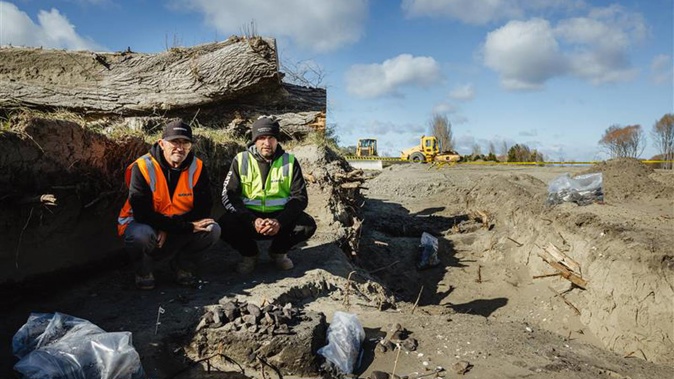
Archaeologists have discovered possibly the biggest cluster of historic domestic waste dumps found in Hawke’s Bay in European civilisation.
The discovery of a cluster of six midden pits west of Napier, at a site not being publicly disclosed, was made by a Hawke’s Bay Regional Council asset management team.
Middens were traditionally used by Māori for domestic waste, usually consisting of animal bones, shells, glass and ceramic artefacts, charcoal from fires, hangi stones and other traces from a settlement.
They were discovered along a 1km stretch of stopbank on Springfield Road during a repair and restoration project. Samples of the contents and soil have been taken for carbon dating, but estimates suggest they are from the mid-1800s.
Cultural advisor and Hawke’s Bay Regional Council Kaihautū Pūtaiao - Mātauranga Māori Te Kaha Hawaikirangi said engaging mana whenua to work with archaeologists was instrumental in creating a new process for handling midden discoveries in the future.
The council worked with Heritage NZ, which authorised the council to undertake works on the site, and throughout the authorisation process they also engaged with mana whenua to provide a cultural values report of the sites.
Everyone involved supported the urgency of completing the stopbank repairs and worked as quickly as possible, he said. Kaitiaki/guardians worked alongside the archaeologist to identify, photograph and measure what was in the middens.
“It is essential to have this cultural input from mana whenua, particularly for future discoveries because these middens are rich in history and give us an insight into how our ancestors lived here in Hawke’s Bay,” Hawaikirangi said.
While no toki/adzes were found in the middens, there were large numbers of shells and hangi stones, indicating food pits used by mana whenua from the area and/or groups transiting up and down the Tūtaekurī River.
The middens the repair team could excavate around were left in situ. Others were moved to a location nearby on the site, their contents buried and covered with geotextile fabric, a special woven and robust fabric that will protect the pits should any future excavation take place.
The middens’ locations have also been mapped as significant archaeological sites.
Hawaikirangi said the council was committed to making connections with mana whenua and the project, where iwi monitors and kaitiaki worked alongside Heritage NZ archaeologists, was a proactive way to do that.
“It has created a blueprint for the future.”
Take your Radio, Podcasts and Music with you









